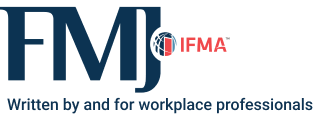Elevate Facility Performance
Mastering strategic hiring & screening

Facility managers bear the critical responsibility of overseeing the safety, maintenance and continuous operation of an organization's physical spaces. Whether managing a single property or multiple sites across industries such as health care, education or industrial operations, having qualified, trustworthy personnel in place is crucial to maintaining smooth-running operations and mitigating risk. The importance of a strong, vetted workforce cannot be overstated, as FMs often work in high-stakes environments where even a single hiring misstep can lead to substantial consequences.
The evolving risks in FM hiring
Facility management roles require a diverse workforce, including maintenance technicians, security personnel, custodial staff and administrative professionals. These employees often have direct access to sensitive areas, valuable assets and confidential information. Hiring without due diligence exposes organizations to compliance violations, workplace safety concerns and operational disruptions.
Compliance violations can lead to costly penalties, legal challenges and reputational damage, making proper candidate screening essential. Additionally, workplace safety remains a primary concern. Employees with a history of misconduct or substance abuse pose risks to colleagues and visitors, potentially leading to hazardous situations. According to a recent report, 13.5 million adults with a substance use disorder are currently employed, contributing to an estimated US$81 billion in annual costs for U.S. employers due to lost productivity, absenteeism and safety incidents.
Then, there are the more costly, unexpected tragedies and circumstances that can happen in any workplace environment. In one year alone, more than 20,000 people in private industries experienced trauma from nonfatal workplace violence, spotlighting the importance of thorough vetting.
Another pressing issue is operational disruption caused by high turnover. Poor hiring choices often lead to increased employee attrition, placing a burden on training resources and disrupting workflow. A bad hire can compromise workplace safety, increase liability and erode organizational integrity while impacting financial stability, employee morale and productivity.
Businesses spend a considerable amount of money on new hires, with costs rising for larger facilities and companies that have extensive onboarding processes. Replacing even just one employee can cost anywhere from one half to four times their salary, straining budgets and creating operational gaps. To overcome these challenges, FMs must adopt a proactive hiring and workforce monitoring approach, incorporating strategic screening solutions that go beyond traditional background checks.
Strengthening hiring practices through continuous monitoring
Pre-employment background checks are standard practice, but risks do not end after hiring. Relying solely on pre-employment background checks is akin to locking the front door but leaving the windows wide open. While initial vetting is a crucial first step, it offers only a snapshot of a candidate's history at a specific point in time. Employees' lives and circumstances change, potentially introducing new vulnerabilities that can jeopardize an organization's security, compliance and reputation.
Continuous employee monitoring allows FMs to stay ahead of potential threats by tracking post-hiring criminal activity, identifying compliance violations in real time and ensuring that workplace standards are consistently met. Although many employers conduct background checks on all employees, only a few have continuous monitoring programs. Implementing a dynamic monitoring system proactively reduces liability while reinforcing a culture of accountability and safety. By tracking employee behavior after hire,Key benefits of continuous monitoring for facility management include:
Proactive risk mitigation for facility security:
-
Real-time threat detection: Immediately identify and address potential security threats from employee activity. Receive timely alerts regarding new criminal records, driving violations (especially relevant for facility vehicle operators) or other changes that could impact facility safety. This allows for swift intervention, minimizing disruption and potential harm.
-
Enhanced access control: Continuous monitoring can flag individuals whose risk profiles have changed, enabling facility managers to adjust access privileges accordingly. This is crucial for securing sensitive areas and protecting valuable assets within the facility.
Ensuring regulatory compliance & operational integrity:
-
Adherence to industry standards: Continuous monitoring supports ongoing compliance with relevant standards and policies for facilities operating in regulated industries (e.g., health care and manufacturing). Identifying and addressing compliance violations promptly avoids costly penalties and regulatory scrutiny.
-
Maintenance of operational protocols: Verify that employees consistently adhere to established safety and operational protocols. This is particularly important for facilities with complex systems or hazardous materials, ensuring a safe and efficient working environment.
Establishing a secure & accountable work environment:
-
Reinforced workplace safety: Demonstrate a commitment to proactive risk management to cultivate a strong safety culture. Employees understand that their actions are subject to ongoing scrutiny, promoting responsible behavior and adherence to safety guidelines. This is vital for minimizing workplace accidents and injuries.
-
Employee credential verification: Maintain up-to-date credentials for employees required to have them to operate equipment or access restricted areas. This helps employers build and maintain a qualified team of personnel in charge of performing critical tasks, reducing the risk of errors and accidents.
Minimizing liability & protecting assets:
-
Reduced legal exposure: Minimize the facility's exposure to legal and financial threats associated with employee misconduct or negligence. Proactively identify and address potential issues, strengthening defenses against liability claims.
-
Protection of facility assets: Protect valuable equipment, inventory and sensitive information from internal threats. Continuous monitoring provides an extra layer of security, deterring theft, vandalism and other forms of asset loss.
Maintaining facility reputation & tenant trust:
-
Preservation of brand image: Protect the facility's reputation and maintain stakeholder trust by demonstrating a commitment to ethical and responsible practices. Continuous monitoring helps prevent incidents that could damage the facility's image and erode public confidence.
-
Client & tenant assurance: Continuous monitoring provides an added layer of security and peace of mind for facilities that host clients or tenants. This is especially important for facilities that handle sensitive data or provide critical services.
Optimizing FM efficiency:
-
Streamlined security operations: Automate the monitoring process, freeing up valuable time and resources for FM teams. This allows them to focus on other critical tasks like maintenance, operations and tenant relations.
-
Data-driven decision-making: Gain valuable insights into employee behavior and risk patterns, enabling data-driven decisions regarding security protocols, access control and other facility management strategies.
While many organizations recognize the importance of pre-employment screening, a major gap exists in adopting continuous monitoring programs. This oversight leaves organizations vulnerable to risks that could be proactively managed. Implementing a strong, dynamic monitoring system puts best practices first and provides a strategic plan to manage daily operations. Part of this plan is the essential need for real-time drug screening of employees at every level of the organization.
Enhancing workplace safety with real-time drug screening
Substance abuse in the workplace presents notable risks. This is exacerbated in facility management roles wherein physical labor, security and emergency response are key functions. Real-time drug screening methods help mitigate risks by identifying substance use before it leads to workplace incidents, ensuring compliance with safety regulations, and reducing absenteeism and productivity loss linked to substance-related issues.
Advancements in screening technology have made it possible to conduct rapid, noninvasive drug tests with real-time results. For example, some organizations have implemented on-site saliva-based drug tests that provide results within minutes, allowing managers to make informed decisions quickly. It enables immediate risk mitigation, especially after incidents or in high-risk zones, and enhances operational efficiency through noninvasive testing. This technology deters substance use, reduces accidents, secures assets, and reinforces a safe, professional facility image.
Building a culture of integrity through employee training
Beyond screening and monitoring, establishing a workplace culture rooted in integrity is key. Employee training programs reinforce company values, promote ethical behavior and bolster regulatory compliance. FMs can strengthen their teams by implementing ethics and compliance training tailored to FM roles, encouraging transparent reporting mechanisms for workplace concerns, and reinforcing policies that promote accountability and professionalism.
A study by the Ethics & Compliance Initiative (ECI) found that organizations that maintain a strong ethical culture diminish the pressure to violate standards (by 74 percent) and the occurrence of misconduct (by 80 percent) compared to those without such standards. Regular training and awareness programs help employees understand the importance of safety, compliance and ethical behavior in FM operations. Facilities investing in employee training programs see higher engagement rates and improved compliance with workplace policies.
Smart screening, smarter hires: Tech solutions for efficient facility staffing
Digital identity verification and biometric screening are two modern technologies that are rapidly advancing in the hiring industry. They help businesses enhance their vetting strategies and reduce the time it takes to hire new employees. By incorporating biometric verification into the hiring process, companies can add an extra layer of security, verifying that applicants' credentials accurately match their identities. Digital ID verification tools can detect forged documents, improve efficiency in onboarding by automating identity confirmation, and reduce the risk of hiring individuals with fraudulent backgrounds. A report by the Identity Theft Resource Center found that employment-related fraud remains a concern in identity fraud. Of the reported identity crimes in one year, 53 percent were related to compromised credentials. By leveraging biometric screening, FMs can prevent fraud before it impacts their workforce.
The future of FM: Hiring for resilience
As workplace risks continue to evolve, proactive hiring and screening strategies will be indispensable in securing the safety and success of facility management operations. By integrating technology, continuous monitoring and a strong culture of integrity, facility managers can effectively mitigate risks, reduce turnover and improve overall workplace stability. Strategic hiring transcends mere vacancy filling; it lays the groundwork for sustained organizational prosperity and operational mastery.

Read more on Leadership & Strategy and Risk Management or related topics Staffing , Maintenance Sourcing and Recruitment
Explore All FMJ Topics









